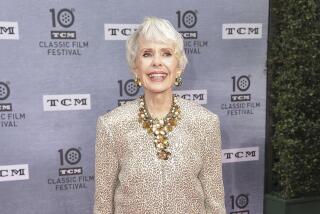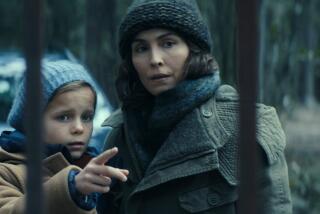Inside the look of Brad Pitt’s ‘Ad Astra’ and its ‘near future’ sci-fi vision
An opening title card declares that “Ad Astra” takes place in the near future. That means far enough away from now that there is a populated colony on the moon, but also close enough to our time that within that colony is a Subway sandwich franchise and a DHL shipping outpost.
Directed and co-written by James Gray, “Ad Astra” convincingly creates a world that is both familiar and fantastic. In the film Brad Pitt plays Roy McBride, an astronaut sent on a top-secret mission to discover what’s behind the destructive power surges coming from near Neptune that threaten the existence of life on Earth. The answer might involve McBride’s father (Tommy Lee Jones), a decorated astronaut long considered missing in space.
As McBride journeys billions of miles across the solar system, he also contends with pirates on the surface of the moon, must break into a rocket as it is launching from Mars, wards off other unexpected hazards and grapples deeply and sincerely with his innermost feelings and definition of self.
The movie’s idiosyncratic mix of the elemental and the out-there — a man sent billions of miles into space to resolve issues with his father — was an essential inspiration. In discussing the impulse behind the film, co-written with Ethan Gross, Gray recalled a passage from Kurt Vonnegut’s 1959 novel “The Sirens of Titan” that reads, “Mankind flung its advance agents ever outward, ever outward. … It flung them like stones. … Outwardness lost, at last, its imagined attractions. Only inwardness remained to be explored.”
“And I thought that was very beautiful,” Gray explained. “That sums up really why we wanted to do it because the contrast was very effective, dramatically, and beautifully illustrated. The further out you go physically and the less you know about yourself, that the great mystery is you.
“We tried to sort of illustrate the interiority by going as far out as we could,” he said. “We thought the contrast would be effective dramatically.”
Anchored by Pitt’s subtle performance, “Ad Astra” moves between large-scale set pieces and quieter moments, often finding McBride reflecting on his estranged relationship with a woman back on Earth played by Liv Tyler.
“It was very much our intent to ... have a scene of interiority followed by something with almost, not quite, but almost some kind of pulp thrills,” said Gray. “So you would have a lunar rover chase followed by some introspection and then you would be confronting a baboon followed by introspection, landing on Mars, followed by introspection. That was very much part of the design, to follow or rip off the Shakespearean template of both broad and subtle.”
Among the many collaborators Gray assembled were cinematographer Hoyte van Hoytema, who also shot Christopher Nolan’s space adventure “Interstellar.” Costume designer Albert Wolsky is a two-time Oscar winner, for Bob Fosse’s “All That Jazz” and Barry Levinson’s “Bugsy.” The score is by “Black Mirror” composer Max Richter, with additional music by Lorne Balfe, composer of music for “Mission: Impossible — Fallout.”
Production designer Kevin Thompson worked with Gray on the filmmaker’s first two features, the gritty New York City crime dramas “Little Odessa” and “The Yards.” Thompson’s subsequent work has included Alejandro González Iñárritu’s “Birdman,” Judd Apatow’s “Trainwreck” and Bong Joon-ho’s “Okja,” but he had never before worked on a project quite like “Ad Astra.”
“It was completely different for both of us,” Thompson said of his renewed collaboration with Gray. “We entered it together, exploring how the approach was going to be — what were our references and what kinds of things did we like. I think that we did want it to feel fairly naturalistic and real, and not space-age, not too futuristic.”
The pair did extensive research through NASA and the Jet Propulsion Laboratory, coming to realize that even as technology has evolved, the basic science of space travel hasn’t changed all that much over the years. So the International Space Station, Skylab and the Apollo missions still provided a valuable reference point.
Gray described the aesthetic he was going for by saying, “We were anxious to have it grounded in at least some kind of tangible reality that we could understand as the near future that seemed plausible. Not realistic but plausible. There’s sort of a difference there, I think.”
Thompson had to build some of the spacecraft sets in both horizontal and vertical versions to shoot the actors in a way that depicted the weightlessness of space, and then created some spaces yet again to incorporate soft details for fight scenes.
For the lunar rover vehicles that are part of a thrilling chase sequence on the surface of the moon, Thompson began with the same sort of thin, lightweight materials used for actual moon vehicles but then had to modify and reinforce them based on the needs of second-unit director Dan Bradley, changing elements of the set as well for the practicalities of production.
An old power plant in Eagle Rock became a key part of the underground Mars colony, while a former Los Angeles Times printing plant became an element of the launch pad from the lunar surface. Wanting to hold onto a bit of movie magic, Thompson declined to explain how the overwhelming images from nature were displayed on the walls of a holding room within the Mars colony — “I’m not going to talk about that, if you don’t mind,” he said politely — while allowing that the moody, shifting colors behind Pitt and Ruth Negga in a pivotal scene purposefully evoke the work of artist James Turrell.
The film’s invocation of real spaces in its depiction of the near future was part of the plan all along.
“That’s very much what James’ vision was from the beginning. He was deeply committed to a verisimilitude,” said producer Dede Gardner, a partner with Pitt and Jeremy Kleiner in the production company Plan B. “He had footage from a lunar trip that he showed everyone and was very similar to what he then re-created. And that was always his goal, that we see it from the ground perspective and that it is not fantasy, but in fact just the kind of quotidian expression of that moment probably not too far away from now.”
“And I think that has had implications across the board on this film,” said Kleiner. “You never lost the sense of that when people are on the moon, they’re not all of a sudden living in a ‘Jetsons’ world. They still get checked in at a table that you get at IKEA or something. And even the visual effects, it took a long time to get those right and really hone those and make sure that they didn’t feel too futuristic and synthetic and apart from our reality.”
For visual effects supervisor Allen Maris, with credits on films such as Stephen Norrington’s “Blade,” David Twohy’s “The Chronicles of Riddick” and Ridley Scott’s “Prometheus,” the question often became not what could be done but rather what the production could get away with not doing.
“That was kind of James’ motto all through production, ‘What’s the minimum amount of digital work we can do to tell the story?‘” said Maris. “It’s a very minimalist approach to the CG. There’s not a lot of spectacle to some of these shots. They come out aesthetically beautiful, just because we’re adding new things in different looks.
“It’s a kind of composition, it’s using all those elements together, but it’s not big CG camera moves or flying through buildings. Anything like that was not in his vocabulary for this movie,” sad Maris. “It’s always trying to be as real as we could.”

For Gray, whose most recent films were detailed historical tales “The Immigrant” and “The Lost City of Z,” the practical concerns of shooting the effects work provided its own unique challenges. While attempting not to lose the emotional momentum of Pitt’s journey, the star was often arduously suspended from wires or required to be acting all alone on set.
“To me it was the hardest thing to deal with in the whole film,” said Gray of balancing effects and emotion. “Actors usually require other actors and the space they’re in to respond. Actors need to listen to the other actors. Actors need to play with the scenery. Acting needs that — they’re very sensory creatures. And I was inept enough to rob Brad of those traditional tools. And I found that a huge challenge.”
In taking on his biggest budget film to date, Gray also wanted to bring a scale of not only of size and scope but of emotions as well. The result is a movie that is an anomaly in contemporary Hollywood, a journey through space and into the self, an exciting adventure tale with a startling and deceptive depth.
“That’s ultimately the ambition, which was to be a little bit subversive, to bring a kind of emotionality, a tenderness, an intimacy, a darkness and a light into what is usually a very kind of cold genre,” said Gray. “We were trying to stand it on its head. We were trying to say, ‘OK, here’s the cold guy, but look how vulnerable and broken he actually is.’ And we were trying to do both the interiority and the exteriority of the character and the situation.”
More to Read
Only good movies
Get the Indie Focus newsletter, Mark Olsen's weekly guide to the world of cinema.
You may occasionally receive promotional content from the Los Angeles Times.







